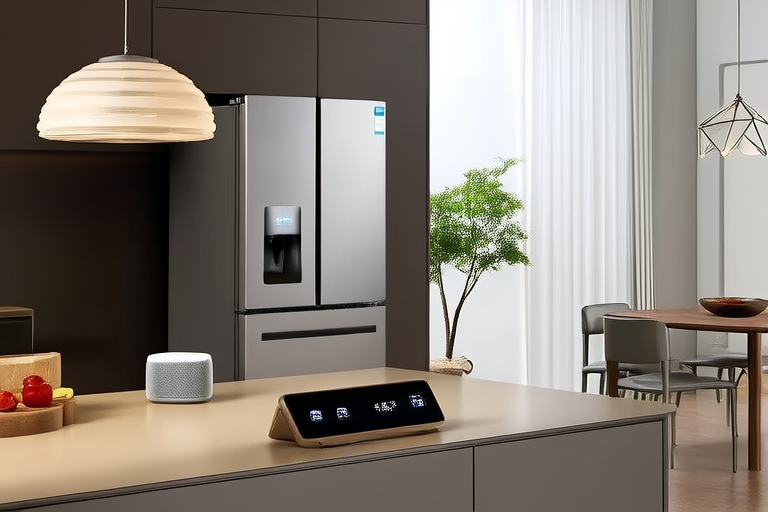“`html
Maximizing Efficiency with Cutting-Edge Smart Home Devices
Introduction
The concept of smart home devices has gained significant traction in recent years, transforming the way we interact with our living spaces. These devices, powered by the Internet of Things (IoT), artificial intelligence (AI), and machine learning, offer unprecedented levels of convenience and control. In today’s fast-paced world, efficiency is paramount, and smart home devices play a crucial role in achieving this goal. From energy savings to enhanced security, these devices are revolutionizing the modern home.
Understanding Smart Home Devices
Smart home devices encompass a wide range of gadgets designed to automate and optimize various aspects of home life. Examples include smart thermostats, lighting systems, security cameras, and voice-controlled assistants. At their core, these devices leverage IoT technology to connect and communicate with each other, creating an interconnected ecosystem within the home. AI and machine learning algorithms enable these devices to learn user preferences and adapt accordingly, providing personalized experiences that enhance overall efficiency.
Benefits of Smart Home Devices
The primary benefit of smart home devices lies in their ability to enhance energy efficiency and reduce utility costs. By intelligently managing heating, cooling, and lighting, these devices can significantly lower energy consumption. For instance, smart thermostats adjust temperatures based on occupancy patterns, ensuring optimal comfort while minimizing waste. Additionally, automation streamlines daily tasks, making life more convenient. Whether it’s scheduling lights to turn off automatically when no one is in the room or setting up reminders for regular maintenance, smart home devices simplify routine activities. Improved security is another key advantage, with advanced monitoring systems and real-time alerts providing peace of mind.
Key Features of Modern Smart Home Devices
Energy Management Systems: Smart thermostats and power outlets are pivotal in managing energy usage. These devices monitor consumption patterns and adjust settings to minimize waste. For example, a smart thermostat can learn your preferred temperature settings and automatically adjust them when you’re away, saving both energy and money.
Lighting Control: Automated dimming and scheduling features allow users to customize lighting according to their needs. This not only enhances ambiance but also reduces electricity bills by preventing unnecessary illumination.
Security Enhancements: Smart locks and doorbell cameras provide robust security solutions. Users can remotely lock or unlock doors and receive instant notifications if any unauthorized access attempts occur.
Voice Control Integration: Virtual assistants like Amazon Alexa and Google Assistant enable hands-free control over multiple devices. With simple voice commands, users can manage everything from lighting to entertainment systems effortlessly.
Integration with Other Smart Devices: Seamless operation across different devices ensures a cohesive smart home experience. For instance, linking a smart speaker to a smart light bulb allows users to control the latter via voice commands.
Real-World Applications and Case Studies
Several real-world applications demonstrate the tangible benefits of smart home devices. One notable example involves a family who installed a smart thermostat in their home. By programming the device to adjust temperatures during unoccupied periods, they managed to reduce their annual heating bill by 20%. Another case study highlights the use of automated lighting systems in a commercial building. The installation of motion sensors led to a substantial decrease in electricity usage, resulting in significant cost savings.
Future Trends in Smart Home Technology
The future of smart home technology promises even greater advancements. Improved connectivity will facilitate smoother interactions between devices, enhancing overall functionality. AI-driven personalization will make homes more responsive to individual preferences, offering tailored experiences. Broader ecosystem integrations will expand the capabilities of smart devices, allowing for more comprehensive automation and control.
Conclusion
Cutting-edge smart home devices offer numerous ways to maximize efficiency in modern homes. From energy savings to enhanced security, these innovative tools provide valuable benefits that improve both comfort and convenience. As technology continues to evolve, the potential for even greater efficiency gains becomes increasingly apparent. Incorporating smart home devices into your living space can lead to a more enjoyable and efficient lifestyle.
Call to Action
To learn more about specific products or services available in the market, visit reputable retailers specializing in smart home technology. For further reading or research, consider exploring industry publications and online forums dedicated to home automation. Stay informed and embrace the future of smart living!
“`


